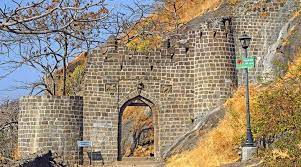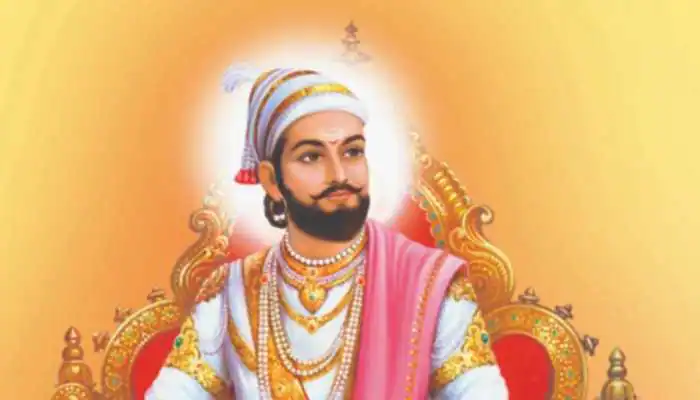- Home
- Indian Dynasties
- Maratha Empire
- Chhatrapati Shivaji Maharaj
Chhatrapati Shivaji Maharaj
Chhatrapati Shivaji Maharaj
Quick Facts:
Country- India
Name- Shivaji Bhonsle
Date of Birth- Feb 19, 1630
Death: April 3rd, 1680
Birthplace Shivneri Fort, Pune, Maharashtra
Parents: Shahaji Bhonsle and Jijabai
Reign: 1674-1680
Spouse: Saibai, Soyarabai, Putalabai, Sakvarbai, Laxmibai, Kashibai
Children: Sambhaji, Rajaram, Sakhubai Nimbalkar, Ranubai Jadhav, Ambikabai Mahadik, Rajkumaribai Shirke
Religion: Hinduism
Successor: Sambhaji Bhonsle
Quick Links
Expansion of Marathas after Shivaji
Update on coronavirus in India
Chatrapati Shivaji was a legendary warrior and ruler of the Maratha Empire, which existed in western India during the 17th century. He is the founder of the Maratha Empire. He was born on 19th February 1630 in Shivneri Fort, near Pune, India, and was the son of Shahaji Bhosale, a prominent general in the service of the Adil Shahi dynasty of Bijapur. In 1674 he was formally crowned as Chhatrapati at Raigad fort.
Shivaji received training in warfare and administration from an early age. He formed a strong army of loyal soldiers, known as the Mavalas, and employed guerrilla tactics to fight against the Mughal Empire and other rival powers in the region. Shivaji achieved a number of important military victories, including the capture of the forts of Torna, Rajgad, and Sinhagad.
He also established a number of strategic alliances with other local rulers and gained control over a significant portion of western India. He was known for calculative and innovative military tactics which led to his huge success against the enemies during his rule. He introduced a number of reforms in the areas of taxation, agriculture, and trade, and encouraged the use of Marathi language and culture in his kingdom.
Early Life and Childhood
Early Life and Childhood:
Shivaji was born in 1630 in the Shivneri Fort, located near the city of Junnar of Pune district. His father, Shahaji Bhosale, was a general in the service of Deccan sultanates, he was in tripartite agreement between Bijapur, Ahmadnagar and Golconda. His mother, Jijabai, was a devout Hindu who instilled in him a strong sense of pride and respect for his culture and heritage. She was the daughter of Lakhuji Jhadhavrao of Sindhkhed.
Due to the work, Shahaji spent most of his time outside Pune. This made a set of ministers to take care of Shivaji’s education. This included Peshwa (Shamrao Nilkanth), a Mazumdar (Balkrishna Pant), a Sabnis (Raghunath Ballal), a Dabir (Sonopant), and a chief teacher (Dadoji Konddeo) who were given the responsibility to train Shivaji in military and martial arts.
As a child, Shivaji had great interest in the tales of valor and chivalry, and also in military affairs. He was trained in martial arts, horse riding, and other physical activities, as well as in the art of governance and administration at a very early age.
Shivaji turned out to be a born leader at a very young age. In 1645, Shivaji launched his first military campaign, attacking the nearby fort of Torna with a small force of men. He succeeded in capturing the fort and soon began to expand his control over other nearby forts and territories, using guerrilla tactics and surprise attacks to outmaneuver his opponents. In 1647, Kondadeo died, then Shivaji took over the administration and challenged the Bijapuri government.

Conflicts with Bijapur
In 1645 Shivaji took control over the Torna fort and other places like Chakan from Firangoji, Kondana from Adil Shahi Governor and many more. He also took control of some other areas east of Pune like Supa, Baramati and Indapur. He built a new fort in Raigad from the treasure found at Torna. As the power of Shivaji slowly started increasing, Adil Shah considered him as a threat to himself.
He imprisoned Shahaji in 1648 by a fellow Maratha sardar called Baji Ghorpade. His father was released in 1648 on condition that he remained low profile. From 1649-1655 Shivaji tried to consolidate his gains. Shivaji could not be kept silent for very long. He conquered Javali in 1656 which gave him access to South and South west Maharashtra. Shivaji undertook various intelligent strategies to subdue Nimbalkar of Phaltan, Shirke, mohite, Mane, Deshmukhs and many more.
Shivaji’s father developed a contradictory attitude towards him. He told all the Bijapuris to deal with the way they wanted with Shivaji. But Shahaji died in 1665 in a hunting accident.
The growth of Shivaji created a sense of fear and insecurity in the Sultan of Bijapur. In 1657 the sultan and his mother sent Afzal Khan to arrest Shivaji. After two months of intense struggle to arrest Shivaji, Afzal Khan sent an envoy to Shivaji. Wherein it was said that the two leaders meet for negotiations.
The two met at Pratapgad fort on November 10,1659 to discuss the terms of negotiation. The condition was that each one was armed with only one sword and one attender. Shivaji, who was intelligent, guessed it to be a trap. He wore armor and a metal tiger claw on his left arm and a dagger on his right. It is believed that Shivaji saved himself from the attack by Afzal Khan with the tiger’s claw. Khan’s dagger could not pierce Shivaji's armour.
Shivaji attacked Afzal Khan with his tiger’s claws. He later ordered his forces to attack the Bijapuri army. Shivaji’s forces successfully defeated the Bijapur Sultanate forces on 10 November 1659 in the Battle of Pratapgarh. Around 3,000 soldiers of Bijapuri Sultanates were killed and one sardar and two sons of Afzal Khan were taken into custody.
Conflict with the Mughals

Earlier Shivaji had good relations with the Mughals. He had offered assistance to Mughals to conquer Bijapur. Later, Shivaji started expanding his kingdom then Aurangzeb considered Shivaji as a threat to them. The conflict started in 1657 when Shivaji’s general raided the Mughal territory in Ahmednagar and Junnar.
Further, Shivaji raided the Mughal territories in the Deccan region, and Mughal Emperor Aurangzeb ordered his forces to subdue Shivaji and bring him to Delhi as a captive. Aurangzeb sent Nasiri Khan who defeated Shivaji at Ahmednagar. But this was interrupted by the rainy season and battle of succession in Delhi due to the illness of Shah Jahan.
After becoming Mughal Emperor, Aurangzeb sent his maternal uncle Shaista Khan to subdue Shivaji. Shaista Khan was very powerful. He launched a massive attack on Shivaji. Shaista Khan who was better equipped with around 80,000 army attacked and seized Pune and many other forts from Shivaji. He even took control of Shivaji’s residence Lal Mahal in Pune.
In 1664, Shivaji attacked Surat and looted the Mughal treasury to replenish his depleted treasury. The attack on Shaista Khan and Surat angered Aurangzeb. He sent his general Jai Singh I along with 150,000 to defeat Shivaji. The Mughal army was successful in taking control of many forts, slaughtering soldiers and looting money. Shivaji finally agreed to come to an agreement with Aurangzeb to prevent further losses. On 11th June 1665 an important Treaty of Purandar was signed between Shivaji and Jai Singh in which it was agreed that Shivaji would give up 23 of his forts and a compensation of 400,000 gold Hun to Mughals.
In 1666, Aurangzeb summoned Shivaji to Agra. Shivaji left for Agra along with his nine year old son Shambhaji. He was not treated with due respect. Shivaji who was angered with the treatment and stormed out of court. He was immediately kept under house arrest by Aurangzeb. When the debate of whether to kill or keep him alive was going on in Aurangzeb's court, Shivaji hatched a plan to escape.
Shivaji pretended to be seriously ill and decided to offer large baskets of sweets to temples and brahmins. He hid his son in one of the baskets and put himself in another large basket. Shivaji was successful in escaping from Agra. His followers welcomed him with great respect and honour. Jaswant Singh acted as a peacemaker between Aurangzeb and Shivaji. However, the peace was short lived. In 1670, Shivaji attacked and ransacked Surat for the second time. He recovered most of the territories back from the Mughals.
Shivaji was quick to learn lessons from the Portuguese and English traders who had already had good footings in India. He began constructing of naval force and started using the sea power for trade as well as defense from the enemies.
Coronation of Chhatrapati Shivaji Maharaj
Shivaji had a huge success against Mughals and other rulers. He had amassed huge wealth and lands over the adjoining territories of Pune and Konkan. He was lacking a proper designation to rule the Empire. The Mughals had still considered him as a zamindar. Shivaji decided to crown himself as the king and establish first Hindu Sovereignty in the South. The preparation for the coronation started way back in 1673. But due to various controversial problems, the coronation was delayed.
Finally on 6th June 1674, he was crowned as the king in a large gathering at Raigarh fort. Around 50,000 people had assembled to witness the coronation which was officiated by Pandit Gaga Bhatt. He almost ruled for six years with eight ministers. He was a strong Hindu follower who called himself as the protector of Hindus.
He was bestowed with many titles like Chhtrapati, Shakakarta( founder of an era), Kshatriya Kulavantas ( head of Kshatriyas) and Haindava Dharmodhhaarak ( who protects Hindu faith)
After the coronation, Shivaji took aggressive steps to conquer many parts of the south. He conquered Khandesh, Bijapuri, Karwar, Janjira, Belgaum and Kolhapur. In 1677, he invaded Karnataka with around 30,000 cavalry and 40,000 infantries.
He further captured forts at Vellore and Gingee which were controlled by Adil Shahi rulers. Later he came to a common understanding with his stepbrother Venkoji over Tanjavur and Mysore. But the understanding between both was nullified and finally Shivaji defeated his half-brother’s army in 1677 and captured Tanjavur and Mysore.
Administration
Chatrapati Shivaji was a 17th-century Indian warrior-king who founded the Maratha Empire in western India. He is widely regarded as one of the greatest heroes in Indian history, and his leadership and military prowess have inspired many generations of Indians.
During his reign, Shivaji implemented a number of administrative reforms that helped to strengthen his empire. He established a system of local self-government that allowed the people to have a say in their own affairs, and he appointed competent administrators to manage the various regions of his empire. He appointed eight ministers who were known as Asta Pradhans.
- Peshwa or the Prime Minister- Who took care of general administration and took care of the kingdom in the absence of the king.
- Amatya or Finance Minister- who was maintaining public accounts.
- Mantri or Chronicler- was responsible for maintaining court records.
- Summant or Dabir or Foreign Secretary- took care of all the matters that were related to relationships with other states.
- Home Secretary- Managing correspondence of the king.
- Panditrao- Religious matters
- Nyayadhis or Chief Justice- Civil and Military Justice
- Senapati or Commander in Chief- All matters to the army of the king
One of the most notable achievements of Shivaji's reign was his success in establishing a powerful and well-organized administration. He introduced a number of reforms in areas such as taxation, land revenue, and trade, which helped to stimulate economic growth. Shivaji introduced the collection of two taxes called the Chauth and Sardeshmukhi. He further divided his kingdom into provinces which was headed by Mamlatdar.
Shivaji also placed a strong emphasis on military strength and was able to build a powerful army that was capable of defending the Maratha Empire against external threats. He introduced a number of innovations in the areas of military tactics and organization, which helped to make his army one of the most formidable in the region.
He also introduced a number of measures to promote economic growth and development, including the construction of roads, bridges, and irrigation systems, and the encouragement of trade and commerce.
Perhaps most importantly, Shivaji was a champion of religious tolerance and cultural diversity. He respected the beliefs and customs of all his subjects, and he encouraged peaceful coexistence between people of different faiths and backgrounds.
The reign of Chatrapati Shivaji was a significant period in the development of art and culture in the Maratha Empire. Under his patronage, many talented artists, poets, and scholars were encouraged to develop their talents, and new forms of art and literature emerged.
Shivaji also placed a strong emphasis on education and culture, and he worked to promote the use of the Marathi language and the development of Marathi literature and art. He was a patron of the arts and sciences, and he encouraged the development of new ideas and innovations in all areas of human endeavor.
Literature also flourished during Shivaji's reign, with the development of new styles of poetry and prose that celebrated Maratha culture and history. One of the most notable literary figures of this period was Sant Tukaram, a prominent Marathi poet who is still revered for his spiritual and philosophical writings.
Music and dance were also important aspects of Maratha culture during Shivaji's reign. The Lavani dance, which originated in the Marathi-speaking regions of India, gained popularity during this time and became a major form of entertainment.
Death and Legacy
Shivaji died on April 3, 1680, at the age of 52 at the Raigad Fort. His death is disputed. After his death a conflict of succession arose after his death between his eldest son Sambhaji and his third wife Soyrabai on behalf of her 10-year-old son Rajaram. Sambhaji dethroned the young Rajaram and ascended the throne himself in 1680. He took possession of Raigad fort after killing the commander. Finally, Rajaram, his mother Soyrabai and wife Janki Bai were imprisoned.
Expansion of Marathas after Shivaji
After the reign of Chhatrapati Shivaji Maharaj, the Marathas experienced a significant expansion in their territories. Shivaji's successors, particularly his son, Rajaram, and grandson, Shahu, played crucial roles in furthering the Maratha empire.
1. Rajaram (1680-1700): After Shivaji's death in 1680, his eldest son, Sambhaji, ascended to the throne but was captured and executed by the Mughals. Consequently, Shivaji's younger son, Rajaram, became the new Maratha ruler. Rajaram faced immense challenges from the Mughals, who sought to suppress the growing Maratha power. He moved the capital to Raigad Fort and initiated guerrilla warfare against the Mughals, successfully defending Maratha territories.
2.Tarabai and Shahu (1700-1714): Rajaram died in 1700, and his widow, Tarabai, assumed the regency for her son, Shivaji II. Shahu was kept as a prisoner by Aurangzeb. After the death of Aurangzeb, Shahu was released and he ruled the Maratha Empire from 1707 to 1749. There was a conflict between Shahu and Tarabai over succession. However Shahu was able to overcome the struggle.
3.Peshwa Era (1714-1818): Shahu appointed Balaji Vishwanath as the first Peshwa (prime minister) of the Maratha Empire. The Peshwas played a crucial role in expanding Maratha territories and consolidating power. Balaji Vishwanath and his successors, particularly Baji Rao I, Balaji Baji Rao (Nanasaheb), and Madhavrao, initiated several military campaigns to expand Maratha influence.
4.Northern Expansion: The Marathas launched successful military campaigns in northern India, expanding their territories beyond the Deccan. Under the leadership of Baji Rao I, they defeated the Mughals, the Nizam of Hyderabad, and other regional powers. Baji Rao I's victories in the Battle of Delhi (1737) and the Battle of Bhopal (1738) marked significant milestones in the Marathas' northern expansion.
5.Southern Expansion: The Marathas also expanded their influence in southern India. They defeated the Nizam of Hyderabad, the Nawab of Arcot, and the Mysore kingdom in various battles. The Marathas established suzerainty over large parts of Karnataka, Tamil Nadu, and Andhra Pradesh.
6.Consolidation and Decline: The Marathas' territorial expansion and military success reached its peak under the leadership of Madhavrao Peshwa. However, after his death in 1772, the Marathas faced internal conflicts, including power struggles among different factions, which weakened their unity and authority. The British East India Company capitalized on these divisions and eventually defeated the Marathas in the three Anglo-Maratha Wars, leading to their decline and the end of their sovereignty.
7.The Marathas remained strong in India until their defeat by the British in the Second and Third Anglo Maratha wars (1805-1818).
Affiliate Disclosure:
If you make any purchase via a link on this site, I may receive a small commission with no added cost to you.



